Blue Cross recognizes Indigenous Peoples' Day 2020
October 7, 2020At Blue Cross, we are focused on achieving racial and health equity as a means of inspiring change, transforming care and improving the health of all. Specifically, we want to shed light on health within Black, Indigenous, People of Color (BIPOC) communities. These discussions are intended to provide a safe space for associates to share their lived experiences and ideas on how health needs, challenges and opportunities within BIPOC communities can be better addressed at all levels.
 On October 12, Minnesota will celebrate Indigenous Peoples’ Day. Increasingly, more states, cities and towns across the nation are choosing to rename Columbus Day and instead honor Indigenous peoples.
On October 12, Minnesota will celebrate Indigenous Peoples’ Day. Increasingly, more states, cities and towns across the nation are choosing to rename Columbus Day and instead honor Indigenous peoples.
Blue Cross and Blue Shield of Minnesota is committed to racial and health equity to better meet the needs of our members and to help create a more equitable future. Celebrating Indigenous Peoples’ Day is important work toward this goal, as learning more about the contributions, histories and lived experiences of Indigenous peoples in Minnesota and across North America allows our organization to best serve these communities.
Indigenous Peoples’ Day is also an important opportunity to recognize the resilience of Native peoples, learn about their culture, have courageous conversations and celebrate the contributions of Indigenous People to our society.
What is Indigenous Peoples’ Day?
In 2014, Minneapolis became the first city in Minnesota to replace the Columbus Day holiday with Indigenous Peoples’ Day. In 2016, Governor Dayton proclaimed Indigenous Peoples’ Day statewide and in 2019 Governor Walz signed an official proclamation that officially recognized Indigenous Peoples’ Day.
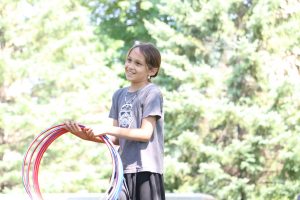 Since the inception of Columbus Day as a federal holiday in 1934, Indigenous People have opposed celebrating the colonial legacy of Christopher Columbus. While Columbus is credited for “discovering” North America, Indigenous People lived here for thousands of years before his arrival.
Since the inception of Columbus Day as a federal holiday in 1934, Indigenous People have opposed celebrating the colonial legacy of Christopher Columbus. While Columbus is credited for “discovering” North America, Indigenous People lived here for thousands of years before his arrival.
For Indigenous People, the legacy of Columbus is one of extreme brutality and loss of life. During his four expeditions, Columbus enslaved and murdered entire tribes, brought disease and ushered in the colonial takeover of Indigenous homelands.
Indigenous Peoples’ Day is an opportunity to celebrate the past, present and future of Native people. The national movement to recognize Indigenous Peoples’ Day is not to revise or eliminate history— it’s an effort to expand it and celebrate those who were here before Columbus and continue to contribute to the fabric of America.
The National Congress of American Indians says “this change allows the opportunity to bring more awareness to the unique, rich history of this land that is inextricably tied to the first peoples of this country and predates the voyage of Christopher Columbus.”
Blue Cross supports associates through Indigenous Peoples' resource group
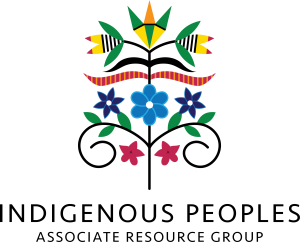 As part of the company’s commitment to diversity and inclusion, Blue Cross created the Indigenous Peoples Associate Resource Group (IPARG), which was launched in conjunction with Indigenous Peoples’ Day 2019. IPARG is designed for associates who are Native American, Native Hawaiian, Alaskan Native, their descendants and allies to support the company strategy of diversity and inclusion and provide educational opportunities across the company.
As part of the company’s commitment to diversity and inclusion, Blue Cross created the Indigenous Peoples Associate Resource Group (IPARG), which was launched in conjunction with Indigenous Peoples’ Day 2019. IPARG is designed for associates who are Native American, Native Hawaiian, Alaskan Native, their descendants and allies to support the company strategy of diversity and inclusion and provide educational opportunities across the company.
“Indigenous Peoples' Day is meaningful because it is a small step towards the recognition of our people.”
IPARG member Laura Marlowe Diem (Sisseton Wapheton Oyate), senior care management operations support analyst, shares that Indigenous People’s Day is meaningful to her because it is “a small step towards the recognition of our people.”
“We are here, we are strong, and we will continue to be here and continue to be strong,” Laura says. “I hope this day intrigues people to learn what isn’t taught in the classrooms about our history, the genocide on our land, the strife and pain of assimilation of an entire culture and how that has been woven into the fabric of our legacy.”

Working to improve health in tribal and urban Indigenous communities
Blue Cross is deeply committed to supporting programs that improve health outcomes in Indigenous communities. Across the company, Blue Cross is working to invest in Indigenous-led efforts to address the unique barriers to health that Indigenous communities face and create a healthier future.
Here are some examples of how we have invested in Indigenous communities working to improve equitable health outcomes this past year:
The Center for Prevention
Through the Catalyst Funding Initiative, the Center for Prevention supports:
- American Indian Community Housing Organization
- American Indian Cancer Foundation
- American Indian Family Center
- Dream of Wild Health
- North American Traditional Indigenous Food Systems
- Twin Cities Native Lacrosse
- White Earth Nation
Through Health POWER, the Center for Prevention supports:
- Leech Lake Band of Ojibwe
- Lower Sioux Indian Community Generations Initiative
- Tribal NEAR Science and Community Wisdom Project
Blue Cross and Blue Shield of Minnesota Foundation
Through Healthy Start, the Blue Cross MN Foundation provides early childhood support to:
- Fond Du Lac Tribal College
- Alliance for Early Childhood Professionals/Wicoie
Through Access to Coverage Program, the Foundation supports:
- Native American Community Clinic
- Northwest Indian CDC
This year, the Foundation quickly acted to provide emergency assistance to address immediate community needs due to the COVID-19 pandemic. The following tribes and Indigenous-led organizations received support:
- American Indian Cancer Foundation
- Leech Lake Band of Ojibwe
- Lower Sioux Indian Community
- Minneapolis American Indian Center
- Native American Community Clinic
- Northwest Indian Community Development Center
Learn more: Who are Indigenous Peoples in Minnesota?
There are 574 federally recognized Tribal Nations in the United States, each with their own unique culture, language, government and identity. Minnesota is home to eleven Tribal Nations and one of the largest urban Native populations in the country.
In my culture, we recognize Minnesota as Mni Sóta Maḳoce― the land of cloud tinted waters. Mni Sóta Maḳoce is the original homeland of the Dakota Oyate (Dakota Nation).
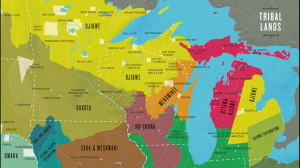 There are four federally recognized Dakota nations that remain in Minnesota: Shakopee Mdewakanton Sioux Community, Prairie Island Indian Community, Upper Sioux Community, and the Lower Sioux Indian Community.
There are four federally recognized Dakota nations that remain in Minnesota: Shakopee Mdewakanton Sioux Community, Prairie Island Indian Community, Upper Sioux Community, and the Lower Sioux Indian Community.
Learn more by watching Our Home: Dakota Homeland.
The vast majority of Dakota peoples live in exile, outside of our traditional homelands, as a result of forced removal following the war of 1862.This includes the Flandreau Santee Sioux Tribe, Crow Creek Sioux Tribe, Sisseton-Wahpeton Oyate, Yankton Sioux Tribe, Standing Rock Sioux Tribe, Spirit Lake Tribe, and the Santee Sioux Tribe, along with Dakota communities in Canada.
This war resulted in the largest mass execution in US history. Thirty-eight Dakota men were hung in Mankato, Minn. on December 26, 1862. The state of Minnesota then proclaimed all Dakota people to be illegal within its boundaries and put a bounty on Dakota scalps. Thousands fled to Canada to seek asylum, and those who remained were imprisoned. 1,200 Dakota women and children were held in a concentration camp built at Fort Snelling and then forcibly marched to the Crow Creek reservation in South Dakota. That Dakota people are still here today should be celebrated.
"That Dakota people are still here today should be celebrated."
Minnesota is also home to the Anishinaabe, which today comprises the largest Indigenous Nation in our state. Anishinaabe translates to “the original people.” The English word for the Anishinaabe is Ojibwe. The Anishinaabe migrated from their original homelands on the East Coast to the Great Lakes region over 1,500 years ago.
There are seven federally recognized Anishinaabe nations in Minnesota: Bois Forte Band of Chippewa, Fond du Lac Band of Lake Superior Chippewa, Grand Portage Band of Lake Superior Chippewa, Leech Lake Band of Ojibwe, Mille Lacs Band of Ojibwe, White Earth Band of Ojibwe and Red Lake Nation.
Learn more by watching Our Home: Ojibwe Homeland.
Additional posts in our BIPOC mental health series
Sasha Houston Brown (Mdewakanton Dakota) chairs the Indigenous Peoples Associate Resource Group at Blue Cross.
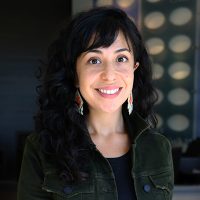


Red Wing, not Minneapolis was not the first city in Minnesota " to replace the Columbus Day holiday with Indigenous Peoples’ Day." The Minneapolis City Council voted to have a joint observance of Columbus Day and Indigenous Peoples Day; as I understood it at the time that was due to wording in come city workers' contracts. A few days after the Minneapolis vote Red Wing's City Council voted to actually rid the city of Columbus Day in favor of Chief Red Wing Day to honor all of the Native People of the Red Wing area – the vote was to replace, not to make it a joint observance as Minneapolis did. As Red Wing's Mayor Bender stated prior to the vote, "Let's not water this down."